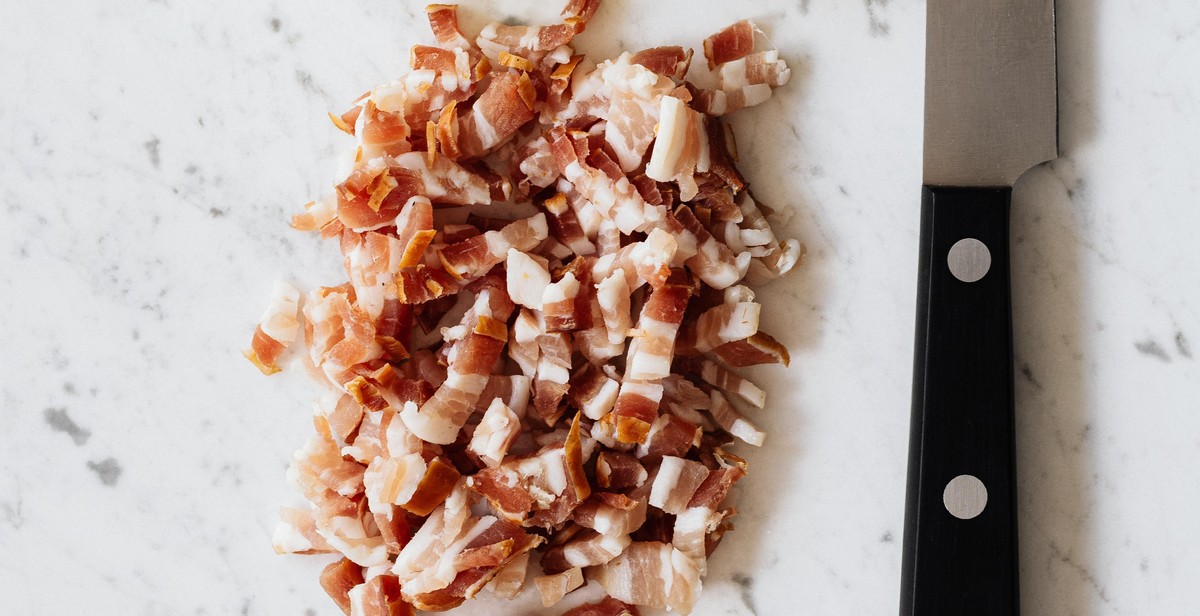How to Smoke Tender and Flavorful Pork Belly on a Pellet Smoker
If you’re a fan of succulent and mouth-watering pork belly, then you know how important it is to get it just right. Smoking pork belly on a pellet smoker can be a challenging task, but with the right techniques and tools, you can achieve tender and flavorful results every time.
Preparing the Pork Belly
The first step in smoking pork belly is to properly prepare the meat. Start by selecting a high-quality cut of pork belly with a good amount of fat. Rinse the pork belly under cold water and pat it dry with paper towels. Next, trim any excess fat or silver skin from the meat.
Seasoning the Pork Belly
Once the pork belly is prepared, it’s time to season it. You can use a dry rub or marinade to add flavor to the meat. Be sure to apply the seasoning evenly and let it sit for at least an hour before smoking.
Smoking the Pork Belly
When it comes to smoking pork belly on a pellet smoker, maintaining a consistent temperature is key. Set your smoker to 225°F and place the pork belly on the grates. Depending on the size of the pork belly, it can take anywhere from 3-6 hours to smoke. Use a meat thermometer to ensure the internal temperature reaches 200°F.
Once the pork belly is fully cooked, remove it from the smoker and let it rest for at least 10 minutes before slicing and serving. Enjoy your perfectly smoked and tender pork belly!

Choosing the Right Pork Belly
When it comes to smoking pork belly, choosing the right cut of meat is crucial to achieving tender and flavorful results. Here are some tips on what to look for when selecting pork belly:
Size Matters
The size of the pork belly is an important factor to consider. A larger pork belly will take longer to smoke and may require more seasoning to ensure that the flavor is evenly distributed throughout the meat. On the other hand, a smaller pork belly may cook too quickly and become overcooked or dry.
It’s recommended to choose a pork belly that weighs between 8 and 12 pounds. This size will allow for a good balance between cooking time and flavor absorption.
Fat Content
The fat content of the pork belly is another essential aspect to consider. The fat on the pork belly is what makes it tender and juicy when smoked. However, too much fat can make the meat greasy and difficult to eat.
Look for a pork belly with a good amount of fat marbling throughout the meat. The ideal ratio of fat to meat is around 70:30. This ratio will allow the pork belly to stay moist and tender while smoking.
Skin On or Off
Some pork bellies come with the skin still attached, while others have had it removed. The decision to choose skin on or off is a matter of personal preference.
If you prefer crispy pork belly skin, choose a pork belly with the skin still attached. However, if you don’t care for the skin or prefer a softer texture, opt for a skinless pork belly.
Quality of Meat
Lastly, the quality of the pork belly is essential to consider. Choose a high-quality cut of meat from a reputable source.
Look for a pork belly that is fresh, with no discoloration or foul odor. If possible, choose a pork belly from a farm that raises their animals without hormones or antibiotics. This will ensure that you are getting a healthier and more flavorful cut of meat.
By following these tips, you can select the perfect pork belly for smoking on your pellet smoker. A good-quality pork belly will make a significant difference in the tenderness and flavor of your smoked pork belly.

Preparing the Pork Belly
Before smoking the pork belly, it is important to prepare it properly. This involves trimming, seasoning, and brining the meat.
Trimming and Seasoning
Start by trimming the pork belly to remove any excess fat or skin. This will help the meat cook evenly and prevent it from becoming too greasy. Use a sharp knife to carefully remove any unwanted parts, but be careful not to remove too much of the fat, as it will help keep the meat moist during the smoking process.
Once the pork belly is trimmed, it’s time to season it. There are many different seasoning blends and rubs that can be used, but a simple mixture of salt, pepper, garlic powder, and paprika is always a good choice. Rub the seasoning mixture all over the pork belly, making sure to cover it evenly.
Brining the Pork Belly
Brining the pork belly is another important step in preparing it for smoking. Brining involves soaking the meat in a solution of water, salt, and other seasonings for several hours. This helps to infuse the meat with flavor and also helps to keep it moist during the smoking process.
To make the brine, combine water, salt, brown sugar, and any other seasonings you prefer in a large bowl or container. Stir until the salt and sugar are completely dissolved. Place the pork belly in the brine, making sure it is fully submerged. Cover the container and refrigerate for at least 8 hours, or overnight.
After the pork belly has finished brining, remove it from the brine and pat it dry with paper towels. It is now ready to be smoked.
Table: Ingredients for Brining the Pork Belly
| Ingredient | Amount |
|---|---|
| Water | 1 quart |
| Kosher salt | 1/2 cup |
| Brown sugar | 1/2 cup |
| Garlic powder | 1 tablespoon |
| Black pepper | 1 tablespoon |
By properly preparing the pork belly through trimming, seasoning, and brining, you can ensure that it will be tender, flavorful, and perfectly smoked on your pellet smoker.

Setting up the Pellet Smoker
Before you start smoking your pork belly, it is crucial to set up your pellet smoker correctly. Here are some steps to follow:
Temperature Control
First, you need to ensure that your pellet smoker is set to the correct temperature. For pork belly, the ideal smoking temperature is between 225-250°F (107-121°C). To achieve this temperature, you need to adjust your pellet smoker’s settings accordingly.
Most pellet smokers have a digital control panel that allows you to set the desired temperature and monitor the internal temperature of the smoker. You should also have a thermometer to check the temperature of the pork belly as it smokes.
Adding Wood Pellets
The next step is to add wood pellets to your pellet smoker. Wood pellets come in different flavors like hickory, apple, cherry, mesquite, and more. Choose the best flavor that matches your pork belly recipe.
Before you add the pellets, ensure that the hopper is clean and free of debris. Fill the hopper with the required amount of pellets, depending on the smoking time of your pork belly. Most pellet smokers have a hopper that can hold up to 20 pounds of pellets.
Once you’ve added the pellets, turn on the smoker and let it heat up to the desired temperature. The pellets will ignite and start producing smoke that will flavor your pork belly.
Tip:
It is essential to use high-quality wood pellets to get the best results. Cheap pellets may contain fillers that can affect the flavor of your pork belly.
Now that your pellet smoker is set up, it’s time to move on to the next step, preparing your pork belly for smoking.

Smoking the Pork Belly
Once your pellet smoker has reached the desired temperature, it’s time to place the pork belly on the smoker. Make sure to place it fat side up to allow the fat to render and baste the meat as it cooks.
It’s important to monitor the temperature of the smoker throughout the cooking process. The ideal temperature for smoking pork belly is between 225-250°F. Use a meat thermometer to ensure the internal temperature of the pork belly reaches 195°F for a tender and juicy result.
Adding flavor to your smoked pork belly is easy with wood chips. Soak your wood chips in water for at least 30 minutes before adding them to the smoker. This will prevent them from burning too quickly and will create a more consistent smoke.
Choosing the Right Wood Chips
The type of wood chips you use can greatly impact the flavor of your smoked pork belly. Fruitwoods like apple and cherry will give your pork belly a sweet and mild flavor, while hickory and mesquite will give it a stronger and more savory flavor.
Experiment with different wood chips to find your perfect flavor combination. You can also mix and match wood chips to create a unique flavor profile.
Adding Wood Chips to the Smoker
When it’s time to add the wood chips to the smoker, you have a few options. You can either place them directly on the heat deflector or use a smoker box. A smoker box will keep the wood chips contained and prevent them from falling through the grates.
Add a handful of wood chips every hour or so to maintain a consistent smoke. Be careful not to add too many wood chips at once, as this can cause the temperature to spike and create an uneven cook.
With these tips, you’ll be able to smoke a tender and flavorful pork belly on your pellet smoker.

Finishing the Pork Belly
After smoking the pork belly to perfection, it is important to let it rest for at least 10-15 minutes. This allows the juices to redistribute within the meat, resulting in a more tender and flavorful final product.
Resting the Pork Belly
Remove the pork belly from the smoker and place it on a cutting board or platter. Cover it loosely with aluminum foil or a clean kitchen towel to keep it warm while it rests. This resting period is also a good time to prepare any sides or sauces you plan to serve with the pork belly.
Slicing
Once the pork belly has rested, it is time to slice it into portions. Use a sharp knife to cut the pork belly into thin slices, aiming for a thickness of about ¼ inch. If you prefer, you can also cut the pork belly into cubes or strips for use in other dishes.
Serving
Pork belly can be served in a variety of ways, depending on your preferences and the occasion. It can be served as a main dish with sides such as roasted vegetables or mashed potatoes, or it can be used as a flavorful ingredient in dishes like tacos, stir fry, or ramen.
When serving pork belly, be sure to highlight its crispy exterior and tender interior. You can also drizzle it with a sauce or glaze for added flavor and visual appeal.
| 1. | Rest the pork belly for at least 10-15 minutes to allow the juices to redistribute within the meat. |
| 2. | Cut the pork belly into thin slices, cubes, or strips depending on your preferences. |
| 3. | Serve the pork belly as a main dish or use it as a flavorful ingredient in other dishes. |
